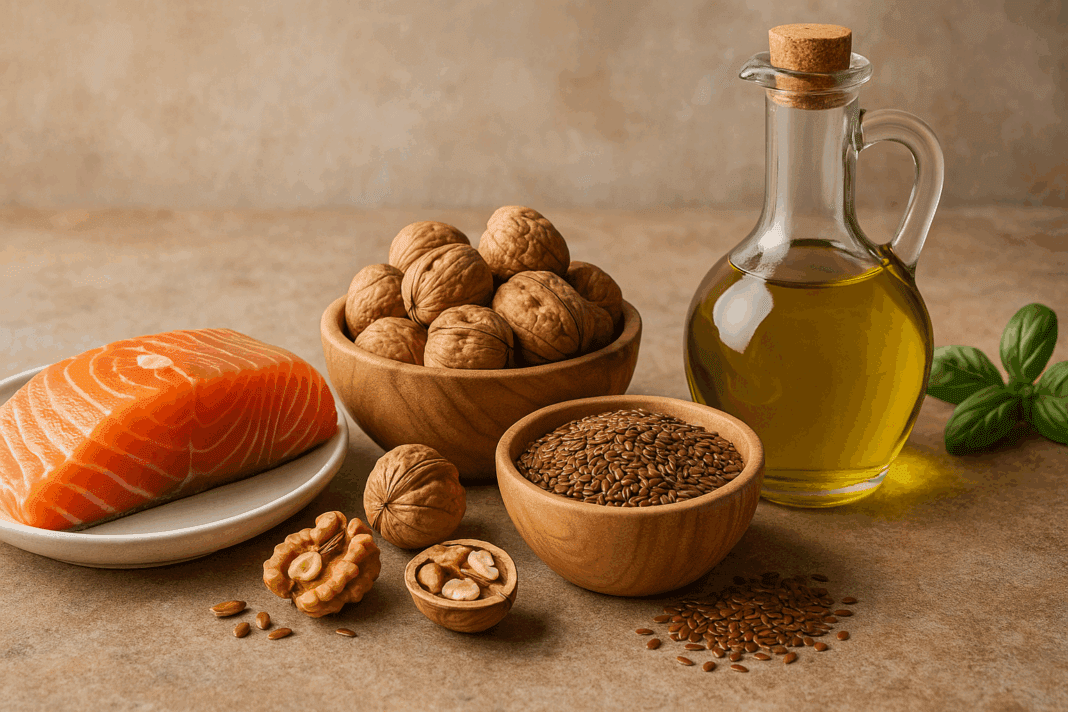In the evolving world of nutritional science, the role of dietary fats has been a subject of much debate. Among them, polyunsaturated fat stands out as both celebrated and misunderstood. As consumers become more mindful of what they eat, a common question emerges: is polyunsaturated fat good or bad? To provide a comprehensive answer, we must explore the science behind this type of fat, assess its impact on cardiovascular health, and examine what leading experts in nutrition and medicine say about its place in a balanced diet. In doing so, we can arrive at a nuanced understanding of how polyunsaturated fats function in the human body and whether they deserve their place at the table of heart-healthy eating.
You may also like: Macronutrients vs Micronutrients: What the Simple Definition of Macronutrients Reveals About Your Diet and Health

Polyunsaturated Fat Defined: Understanding the Basics
Polyunsaturated fat is a type of dietary fat found in both plant and animal sources. Chemically, it contains more than one unsaturated carbon bond in its fatty acid chain, which distinguishes it from monounsaturated fats that contain only one double bond. This molecular structure makes polyunsaturated fats more fluid at room temperature and less stable during high-heat cooking, compared to saturated fats. There are two primary categories of polyunsaturated fats: omega-3 and omega-6 fatty acids. Both play crucial roles in bodily functions, including inflammation regulation, brain function, and cell membrane integrity. While our bodies can produce some fats on their own, omega-3 and omega-6 fatty acids are considered essential fats, meaning they must be obtained through diet. Understanding their distinct roles is essential in evaluating whether polyunsaturated fat is good or bad in the context of overall health.
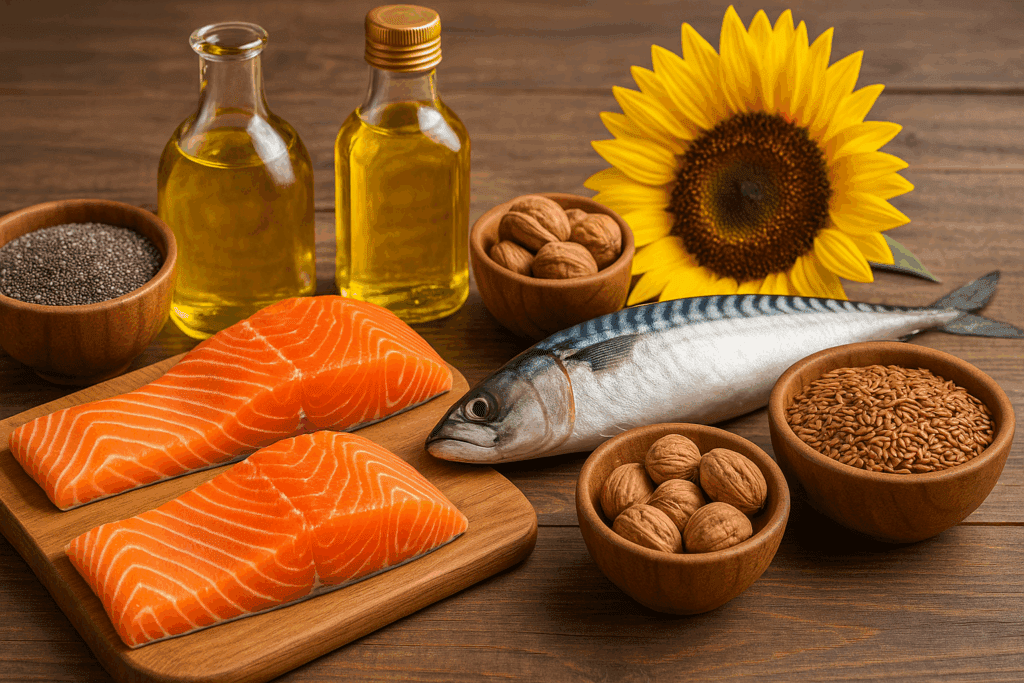
Sources of Polyunsaturated Fat: From Nature to Plate
Foods rich in polyunsaturated fat include fatty fish like salmon, mackerel, and sardines, which are particularly high in omega-3 fatty acids. On the plant-based side, flaxseeds, chia seeds, walnuts, sunflower seeds, and vegetable oils such as safflower, corn, and soybean oil are prominent sources. These foods are often promoted as heart-healthy options due to their fat composition. However, not all polyunsaturated fats are equal in their health effects. The balance between omega-3 and omega-6 fatty acid intake is crucial. While omega-3s are generally anti-inflammatory, excessive consumption of omega-6s, especially in processed foods, may contribute to chronic inflammation when not counterbalanced by adequate omega-3s. This complexity is central to the question of whether polyunsaturated fat is good or bad, and it underscores the importance of dietary context and moderation.
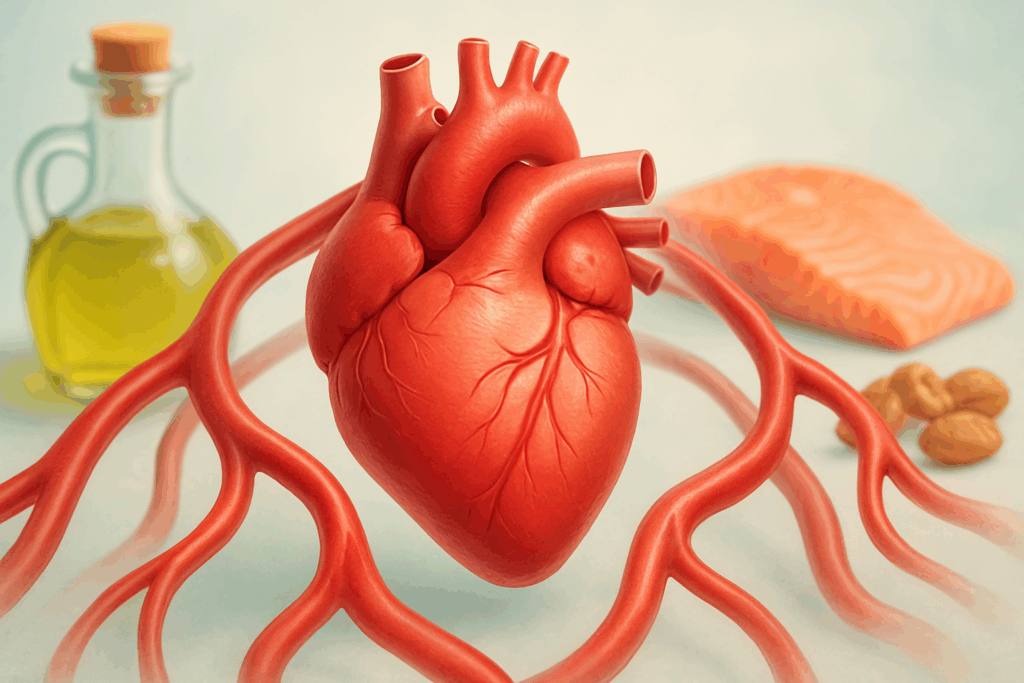
Cardiovascular Benefits Backed by Science
One of the most well-documented advantages of polyunsaturated fats is their ability to support heart health. Numerous studies have demonstrated that replacing saturated fats with polyunsaturated fats can lead to significant reductions in LDL (“bad”) cholesterol levels, which are a known risk factor for cardiovascular disease. A landmark study published in the Journal of the American Heart Association found that participants who consumed higher levels of polyunsaturated fat had a lower risk of coronary heart disease compared to those who consumed more saturated fat. Omega-3 fatty acids, in particular, are known to help reduce blood triglycerides, lower blood pressure, and improve endothelial function. For individuals concerned about cardiovascular risk, incorporating moderate amounts of polyunsaturated fat from whole food sources may offer protective effects. From this standpoint, the argument that polyunsaturated fat is good becomes scientifically sound, especially when used as a replacement for less healthful fats.
Is Polyunsaturated Fat Bad? Context and Controversy
Despite the overwhelming support for polyunsaturated fats in the realm of cardiovascular health, some experts caution against overconsumption, particularly of omega-6 fatty acids. Modern Western diets are disproportionately high in omega-6 due to the widespread use of refined vegetable oils and processed foods. While omega-6 fats are essential, an imbalanced ratio of omega-6 to omega-3 can promote inflammation, which is linked to conditions like atherosclerosis, type 2 diabetes, and even certain cancers. Some researchers argue that this imbalance, rather than the fat itself, leads to confusion about whether polyunsaturated fat is bad. Importantly, the solution is not to avoid omega-6 altogether but to ensure a better balance by increasing omega-3 intake. This highlights the need for dietary nuance and reinforces that health outcomes often depend not only on individual nutrients but also on overall dietary patterns.

Balancing Omega-3 and Omega-6: A Nutritional Imperative
Achieving an optimal balance between omega-3 and omega-6 fatty acids is a cornerstone of using polyunsaturated fats wisely. Historically, human diets contained these fats in a roughly 1:1 ratio. However, in contemporary eating patterns, the ratio can skew as high as 20:1 in favor of omega-6. Such an imbalance may increase pro-inflammatory pathways, potentially undermining the health benefits associated with polyunsaturated fats. Nutritionists recommend incorporating more omega-3-rich foods such as oily fish, flaxseeds, and chia seeds while being mindful of excessive intake of omega-6 from processed snacks and fried foods. Rather than asking in binary terms whether polyunsaturated fat is good or bad, a more informed question would be: how can we optimize our consumption of these essential fats to promote long-term health?
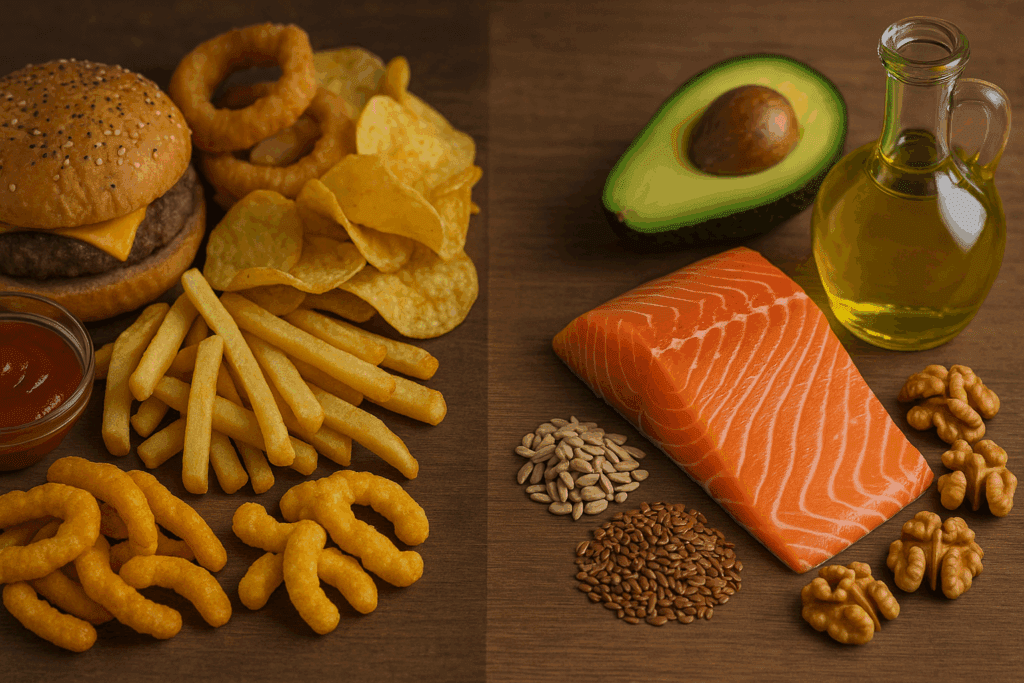
Polyunsaturated Fat in Processed Foods: A Health Concern?
Another layer to this discussion involves the source of polyunsaturated fats in the modern food supply. While natural sources such as nuts, seeds, and fatty fish offer a wealth of nutrients along with their fat content, highly processed foods often contain refined oils high in omega-6. These oils are commonly used for frying and preserving shelf-stable products, where oxidation during processing can create harmful compounds. Emerging research suggests that when polyunsaturated fats are exposed to high heat or prolonged storage, they may become oxidized, forming potentially toxic substances that negate their heart-healthy benefits. This does not necessarily mean that polyunsaturated fat is bad across the board, but rather that quality, preparation, and food context matter immensely. Consumers are encouraged to favor whole, minimally processed sources to retain the beneficial properties of these fats.
What Nutrition Experts and Cardiologists Say
Leading nutrition experts and cardiologists generally advocate for the inclusion of polyunsaturated fats as part of a heart-healthy eating pattern, especially when replacing saturated or trans fats. According to the American Heart Association, polyunsaturated fats can help reduce the risk of cardiovascular events when used in place of harmful fats. Registered dietitians emphasize the importance of food-based sources over supplements, advising patients to consume omega-3-rich fish at least twice per week. Meanwhile, cardiologists often recommend a Mediterranean-style diet, rich in unsaturated fats, fiber, and antioxidants, which has consistently been linked to reduced cardiovascular mortality. The consensus is not simply whether polyunsaturated fat is good, but how and in what form it is consumed. This expert-backed guidance reinforces that the broader dietary context determines the healthfulness of any fat source.
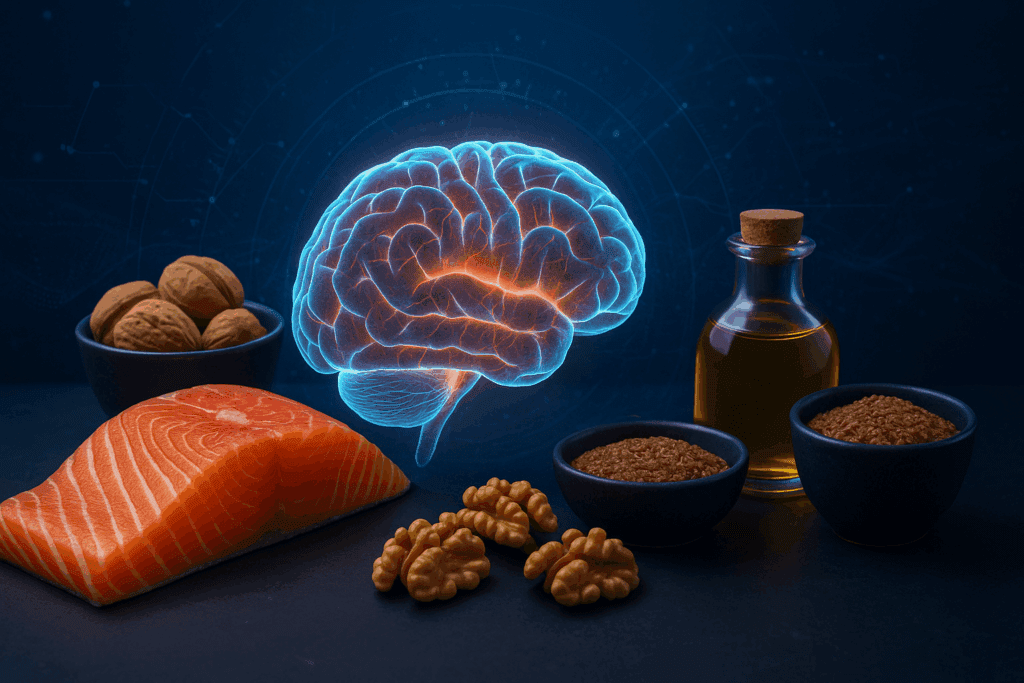
Polyunsaturated Fat and Cognitive Function
Beyond cardiovascular health, polyunsaturated fats—especially omega-3 fatty acids—play a vital role in brain health. DHA (docosahexaenoic acid), a key component of omega-3, is a structural element in brain cell membranes and is essential for cognitive development, memory, and neurological function. Some studies have linked higher omega-3 intake with a reduced risk of cognitive decline and Alzheimer’s disease in aging populations. These findings offer another perspective on the question of whether polyunsaturated fat is good, particularly when considering long-term neurological health. While more research is needed to establish causality, the existing body of evidence supports the inclusion of these fats in diets aimed at maintaining brain function and preventing age-related cognitive disorders.
Polyunsaturated Fat in Pediatric and Prenatal Nutrition
The benefits of polyunsaturated fat extend to early life stages, from fetal development to childhood growth. Omega-3 fatty acids, especially DHA, are critical during pregnancy for the development of the fetal brain and retina. Several health organizations, including the World Health Organization and the American College of Obstetricians and Gynecologists, recommend that pregnant individuals consume sufficient amounts of DHA to support optimal neurological outcomes in their offspring. In children, omega-3s have been studied for their potential role in managing ADHD symptoms and supporting cognitive performance. These findings emphasize that polyunsaturated fat is not only good but essential during key stages of human development. Ensuring adequate intake during pregnancy and early childhood sets the stage for healthier brain development and cognitive function across the lifespan.
The Role of Polyunsaturated Fat in Inflammation and Immune Response
Inflammation is a double-edged sword in human physiology—it is a necessary response to injury and infection, yet chronic inflammation is implicated in many diseases. Polyunsaturated fats, particularly omega-3s, have been shown to produce anti-inflammatory effects by modulating immune signaling pathways and reducing the production of pro-inflammatory molecules. In contrast, excessive omega-6 consumption without sufficient omega-3 may tip the balance toward a pro-inflammatory state. This nuanced interaction between types of polyunsaturated fats and inflammation provides important insight into the complex nature of dietary fats and their physiological consequences. Framing the issue in binary terms—”is polyunsaturated fat bad?”—oversimplifies what is a deeply contextual topic. Instead, understanding their impact on inflammation helps clarify when and how these fats can support or hinder health.
Practical Strategies for Including Polyunsaturated Fats in a Healthy Diet
Incorporating polyunsaturated fats into your daily meals can be simple and rewarding. Choosing fatty fish such as salmon, trout, or sardines a few times a week offers a rich supply of omega-3s. Plant-based alternatives like walnuts, flaxseeds, and chia seeds can be added to breakfast bowls, smoothies, or baked goods. Using vegetable oils like sunflower or canola oil in moderation for salad dressings or low-heat cooking can also contribute beneficial fats, though care should be taken to avoid high-heat frying which may degrade the oil’s quality. When navigating grocery store aisles, it is wise to read labels carefully and choose products that contain whole food ingredients over highly processed snacks and ready-made meals. This balanced, mindful approach affirms that polyunsaturated fat is good when consumed thoughtfully and in harmony with the rest of a nutrient-rich diet.
Frequently Asked Questions (FAQ) About Polyunsaturated Fat: Expert Insights and Practical Advice
1. Can polyunsaturated fat influence hormone regulation in the body?
Yes, polyunsaturated fat can play a key role in hormone production and regulation, particularly those involved in inflammation and metabolism. Omega-3 and omega-6 fatty acids—two major types of polyunsaturated fat—serve as precursors to eicosanoids, which are signaling molecules that help regulate blood pressure, immunity, and other hormonal responses. While it’s clear that polyunsaturated fat contributes to healthy endocrine function, the type and balance of these fats are critical. An imbalance favoring omega-6 over omega-3 may skew hormonal signaling toward pro-inflammatory pathways, potentially disrupting endocrine equilibrium. So while the question “is polyunsaturated fat good?” may have a positive answer in this context, it also depends on ensuring that the sources and ratios are properly managed.
2. How does polyunsaturated fat affect athletic performance and recovery?
Emerging research suggests that polyunsaturated fat, especially omega-3s, may enhance athletic performance by reducing exercise-induced inflammation and improving cardiovascular efficiency. These fats help maintain membrane fluidity in muscle cells, which may improve endurance and oxygen delivery during prolonged physical activity. In terms of recovery, omega-3s can modulate post-exercise muscle soreness and may support protein synthesis through anti-inflammatory pathways. While athletes often focus on protein and carbohydrates, incorporating healthy polyunsaturated fat sources like flaxseed oil or salmon can optimize training outcomes. For those asking, “is polyunsaturated fat good for athletes?”—the evidence increasingly points to yes, particularly in balanced and high-quality forms.
3. Are there potential risks of over-supplementing with polyunsaturated fat?
Although polyunsaturated fat is widely regarded as beneficial, especially when derived from whole foods, excessive supplementation can carry risks. High doses of omega-3 supplements, for instance, may thin the blood and increase the risk of bleeding in certain populations, especially those on anticoagulants. Additionally, overuse of omega-6-rich oils in supplemental form may further exacerbate inflammatory imbalances if not paired with sufficient omega-3 intake. This has led some to wonder, “is polyunsaturated fat bad when overused?”—and in isolated, supplement-heavy contexts, it can be. A food-first approach is generally recommended to minimize the potential for unintended side effects while preserving the benefits.
4. Can cooking methods impact the healthfulness of polyunsaturated fat?
Yes, cooking methods significantly influence whether polyunsaturated fat remains beneficial or becomes harmful. These fats are chemically less stable than saturated fats, meaning they can oxidize when exposed to high heat. Oxidation leads to the formation of lipid peroxides and other compounds that may damage cells and contribute to chronic disease. For this reason, oils high in polyunsaturated fat, such as safflower or sunflower oil, are best used in dressings or for low-heat cooking. In such cases, asking “is polyunsaturated fat good” becomes more about how it’s used than whether it’s inherently beneficial.
5. How do cultural dietary patterns shape the intake of polyunsaturated fat?
Dietary traditions across the globe vary in their sources and types of polyunsaturated fat. In Mediterranean cultures, omega-3s are commonly consumed through seafood, while in East Asian diets, cooking oils derived from sesame or soybean often provide both omega-3 and omega-6 fats. Meanwhile, Western diets are typically skewed toward omega-6 due to the prevalence of processed foods and refined vegetable oils. These patterns help answer the question “is polyunsaturated fat good or bad?” by illustrating how broader dietary context determines its health effects. Learning from diverse culinary practices can guide healthier fat consumption globally.
6. Is polyunsaturated fat safe for individuals with autoimmune diseases?
The role of polyunsaturated fat in autoimmune conditions is complex and highly individualized. Some patients benefit from increased omega-3 intake, which may reduce systemic inflammation and support immune regulation. However, excess omega-6 intake could potentially exacerbate autoimmune flare-ups due to its pro-inflammatory metabolites. For people with conditions like lupus, rheumatoid arthritis, or Hashimoto’s thyroiditis, medical guidance is essential in determining whether polyunsaturated fat is good in therapeutic amounts. Research continues to explore personalized approaches, but a general rule is to increase anti-inflammatory omega-3s while moderating omega-6s from processed sources.
7. Can polyunsaturated fat influence mental health and emotional well-being?
Growing evidence suggests that dietary polyunsaturated fat may play a role in mood regulation and mental health. Omega-3s, particularly EPA and DHA, are crucial for brain structure and function, and deficiencies have been linked to increased risk of depression, anxiety, and cognitive decline. Some clinical trials have even shown that omega-3 supplementation can support antidepressant therapy. However, an excessive omega-6 to omega-3 ratio may counteract these benefits by promoting neuroinflammation. For those wondering whether polyunsaturated fat is good for mental wellness, the research supports its positive role—when consumed thoughtfully and in appropriate balance.
8. How is the food industry addressing concerns about polyunsaturated fat oxidation?
Food manufacturers are increasingly aware of the oxidative sensitivity of polyunsaturated fats and are taking steps to improve their stability. This includes using cold-pressing techniques, dark glass packaging to limit light exposure, and nitrogen flushing to reduce oxygen content in containers. Some products now combine polyunsaturated fat with natural antioxidants like vitamin E to slow degradation. Innovations in this space are reshaping how consumers perceive the question “is polyunsaturated fat bad” in processed products. Transparency in labeling and improved production methods are crucial to preserving health benefits.
9. What emerging research is redefining our understanding of polyunsaturated fat?
New studies are focusing on the nuanced metabolic effects of individual fatty acid subtypes within the polyunsaturated fat category. For example, not all omega-6 fatty acids behave the same—some, like GLA (gamma-linolenic acid), show anti-inflammatory properties. Scientists are also exploring how genetic differences affect individual responses to polyunsaturated fat, particularly regarding lipid metabolism and inflammation. As research grows more granular, binary questions like “is polyunsaturated fat good or bad?” are giving way to personalized nutrition strategies. This shift could lead to precision dietary guidelines tailored to genetic profiles, lifestyle, and health status.
10. How can someone intuitively gauge whether they are getting the right amount of polyunsaturated fat?
While precise intake often requires tracking with a dietitian or nutritionist, certain signs can hint at whether your balance is optimal. Chronic dry skin, difficulty concentrating, and fatigue may signal omega-3 deficiency. Conversely, excessive intake of omega-6 from processed foods might coincide with inflammation-related symptoms such as joint stiffness or acne. People often ask, “is polyunsaturated fat good in unlimited amounts?”—and the answer is no. Achieving an intuitive sense of balance involves choosing whole food sources, observing how your body responds, and adjusting intake based on lifestyle factors like stress, exercise, and health goals.
Conclusion: Is Polyunsaturated Fat Good or Bad? A Balanced Perspective for Heart-Healthy Living
When considering whether polyunsaturated fat is good or bad, it is essential to move beyond simplistic dichotomies and instead embrace a more informed, science-backed perspective. Polyunsaturated fats, particularly those rich in omega-3 fatty acids, offer a wide array of benefits ranging from cardiovascular support to cognitive protection and anti-inflammatory effects. However, their health impact hinges on factors such as the type of fat consumed, the ratio of omega-3 to omega-6, the degree of food processing, and the broader dietary context. While excessive intake of omega-6 from processed oils may pose risks, these can be mitigated through dietary balance and the prioritization of whole food sources. Informed by the principles of nutritional science, expert consensus, and practical application, the verdict is clear: polyunsaturated fat is good when consumed in the right forms and proportions. By integrating these fats into a heart-healthy diet, individuals can support both short-term vitality and long-term wellness in a way that aligns with evidence-based dietary recommendations and a nuanced understanding of human health.
Further Reading:
Polyunsaturated fat: Everything you need to know
Facts about polyunsaturated fats


